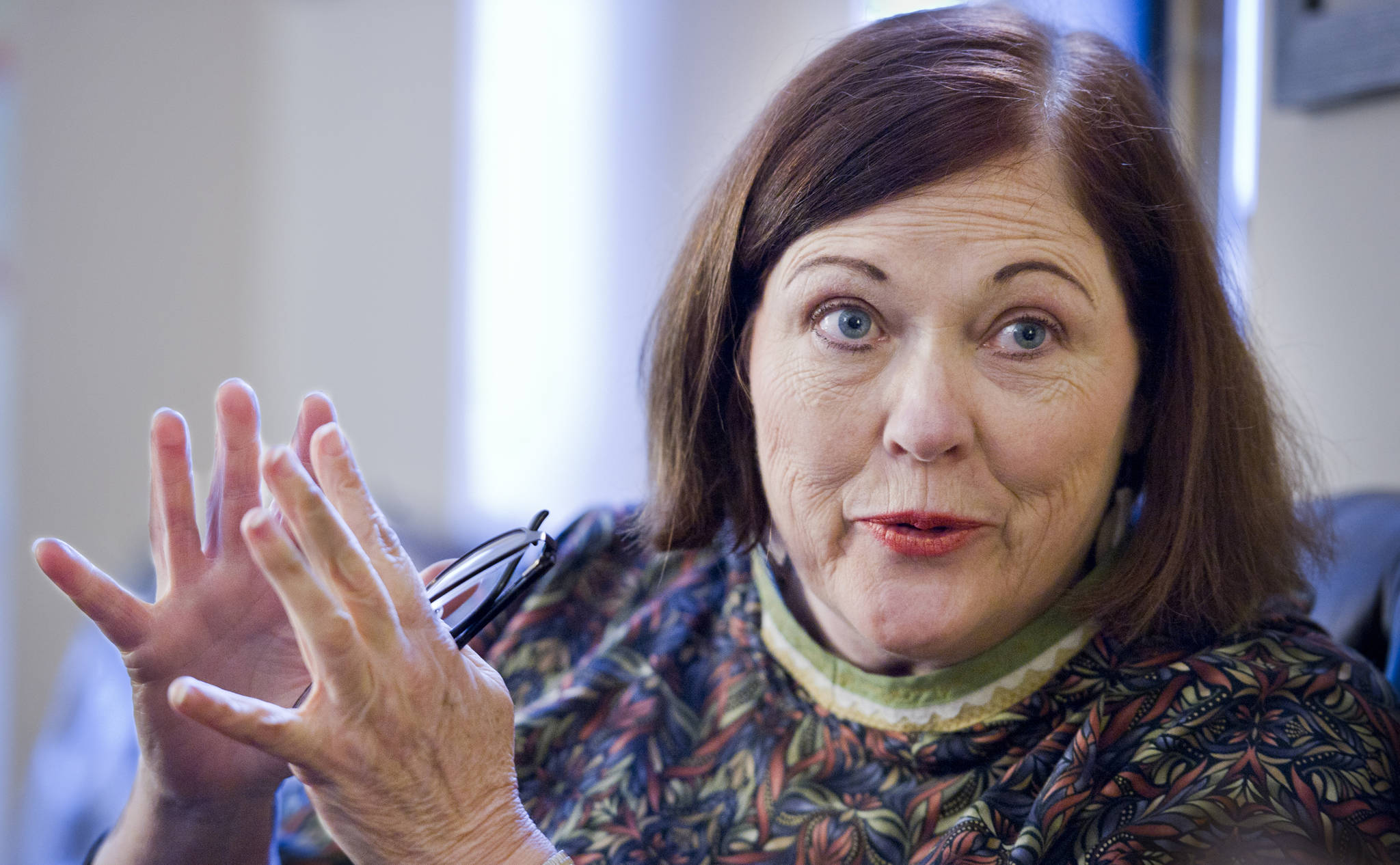In Alaska, a 14-year-old can legally get married.
Sen. Berta Gardner, D-Anchorage, has a problem with that and thinks other Alaskans do, too. On Thursday, Gardner announced plans to introduce legislation that increases the age limit to 18, except for emancipated minors 16 or older.
Gardner’s announcement came as lawmakers begin the legislative preseason, a week of prefiled bills and preparation for the Jan. 16 start of the legislative session.
“The child marriage issue really applies to very few young people, very few young children, but for those children, it could be a lifesaver,” said Gardner, a Democrat who represents the University and Spenard neighborhoods.
Gardner said her top priority remains the state’s deficit, but there is still room to fix other problems.
“It isn’t a big priority, but every piece of legislation matters to somebody, and it matters a great deal to some people,” she said.
According to the records of the Alaska Section of Health Analytics and Vital Records, there were nine marriages in Alaska involving a child of 14 years old between 1990 and 2016, the latest year for which statistics are available. There were almost 20,000 marriages involving Alaskans between ages 15 and 19 during that period.
Alaska may have many more child marriages than identified by the state, as evidenced by divorce records. According to the section of vital records, there were 36 divorces involving a child of 14 years old between 1990 and 2016, possibly indicating marriages in other states and nations. Alaska has no statute that forbids the state from recognizing marriages of children younger than 14, according to Heidi Lengdorfer, head of the vital records section.
“Any reason why there are more divorces than marriages in this age group is speculation,” she wrote by email, because the state doesn’t collect information on why couples divorce.
Gardner said she was inspired to write the legislation after hearing national coverage of the issue. In July, the public television program Frontline aired a program about child marriage nationwide. The Frontline investigation found at least 207,468 children were married in the United States between 2000 and 2015, and that count was incomplete because six states, including California and Georgia, did not provide data.
Rates of child marriage are declining nationwide, thanks in part to legislation at the state level. According to Frontline’s figures, 23,583 minors were married in 2000; that figure fell to 9,247 in 2010.
Virginia, Texas and New York have passed laws restricting marriage to legal adults. Connecticut has banned marriage before age 16. Eleven other states are considering legislation that limits marriage by children; six of those states are considering outright bans, according to an accounting by the news magazine The Economist.
“I think Americans broadly recognize that 14 and 15 year olds are children,” Gardner said.
She added: “It makes you wonder: Why would people support children being married? I think in some cases there are cultural reasons, religious practices … predatory reasons.”
In Alaska’s case, the current child-marriage law appears to be the result of an attempted act of mercy by legislators in the 1970s. Legislative librarian Jennifer Fletcher provided the history of the state’s marriage statute to the Empire.
In 1963, the Alaska Legislature passed (and the governor signed into law) a bill setting the state’s age of consent at 18 for men and 16 for women. Someone younger than those ages could be married if the woman was pregnant and the parents of the minor gave their permission.
Eleven years later, the state revised its age of consent, making it equal between men and women and forbidding anyone younger than 19 from marrying.
After that revision, lawmakers heard from pregnant teens who asked that they be allowed to marry. The Legislature duly revised the law in 1975 to allow someone as young as 16 to be married with a parent’s permission. Someone as young as 14 could be married with the permission of a superior court judge.
The bill passed the Senate in a 16-2 vote. In the House, the vote was 25-13. That law remains in force today.
Gardner is a member of the Senate’s Democratic minority, and legislation from any minority caucus is an uphill battle. That’s likely to be even more the case this year, when lawmakers are expected to devote their time to the state budget.
“Getting a bill passed is always difficult whether you’re in the majority or the minority, and part of the process is starting the conversation,” she said.
Gardner is not running for re-election this year, and she said it doesn’t matter to her whether she’s responsible for a change in the law, or if someone else is. The important thing is that the law change.
“It doesn’t matter how it gets done, as long as it happens,” she said.
• Contact reporter James Brooks at james.k.brooks@juneauempire.com or call 523-2258.

